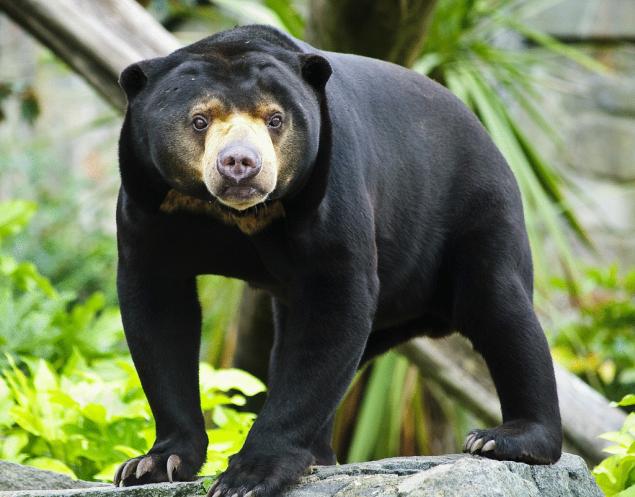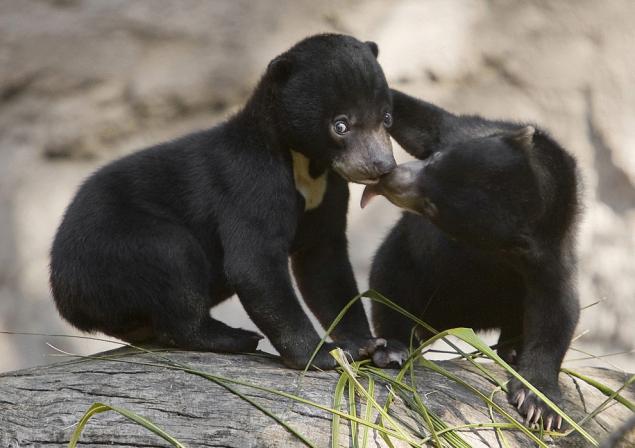668
Malay sun bear
Sunny bear, honey bear or even a bear-dog — so-called small size of the Malay bear.
They are found in Borneo, Java, Sumatra and the Malay Peninsula. Once the species has inhabited the southern part of China, where the last adult female was produced in 1972, but now, alas, there is no longer the solar bears. By the way, why solar? The fact is that on his chest they have a yellow spot that resembles a sunrise.

Malayan sun bear is the smallest, but that doesn't prevent him to be also the most aggressive.
This animal with a fairly long torso, thick head, wide muzzle and small ears, very small lazy eye and a short, water-repellent fur. The paws of these bears are strong, soles naked; nails long and sharp.
From Malay bear's unusually long tongue that, apparently, there is a device for obtaining termites, and, of course, honey extraction.

They have the largest canines of all species of bears, which are adapted for tearing meat. But Malay bears are not particularly carnivorous, predatory, these clicks are used as a tool for cracking of wood to get to the coveted insects.
Malayan sun bear is listed in the international Red Book as one of the rarest bears. Now their numbers are decreasing every year. Destroyed habitat, forcing these bears to live in smaller and more isolated areas.

Source: /users/60
They are found in Borneo, Java, Sumatra and the Malay Peninsula. Once the species has inhabited the southern part of China, where the last adult female was produced in 1972, but now, alas, there is no longer the solar bears. By the way, why solar? The fact is that on his chest they have a yellow spot that resembles a sunrise.

Malayan sun bear is the smallest, but that doesn't prevent him to be also the most aggressive.
This animal with a fairly long torso, thick head, wide muzzle and small ears, very small lazy eye and a short, water-repellent fur. The paws of these bears are strong, soles naked; nails long and sharp.
From Malay bear's unusually long tongue that, apparently, there is a device for obtaining termites, and, of course, honey extraction.

They have the largest canines of all species of bears, which are adapted for tearing meat. But Malay bears are not particularly carnivorous, predatory, these clicks are used as a tool for cracking of wood to get to the coveted insects.
Malayan sun bear is listed in the international Red Book as one of the rarest bears. Now their numbers are decreasing every year. Destroyed habitat, forcing these bears to live in smaller and more isolated areas.

Source: /users/60























